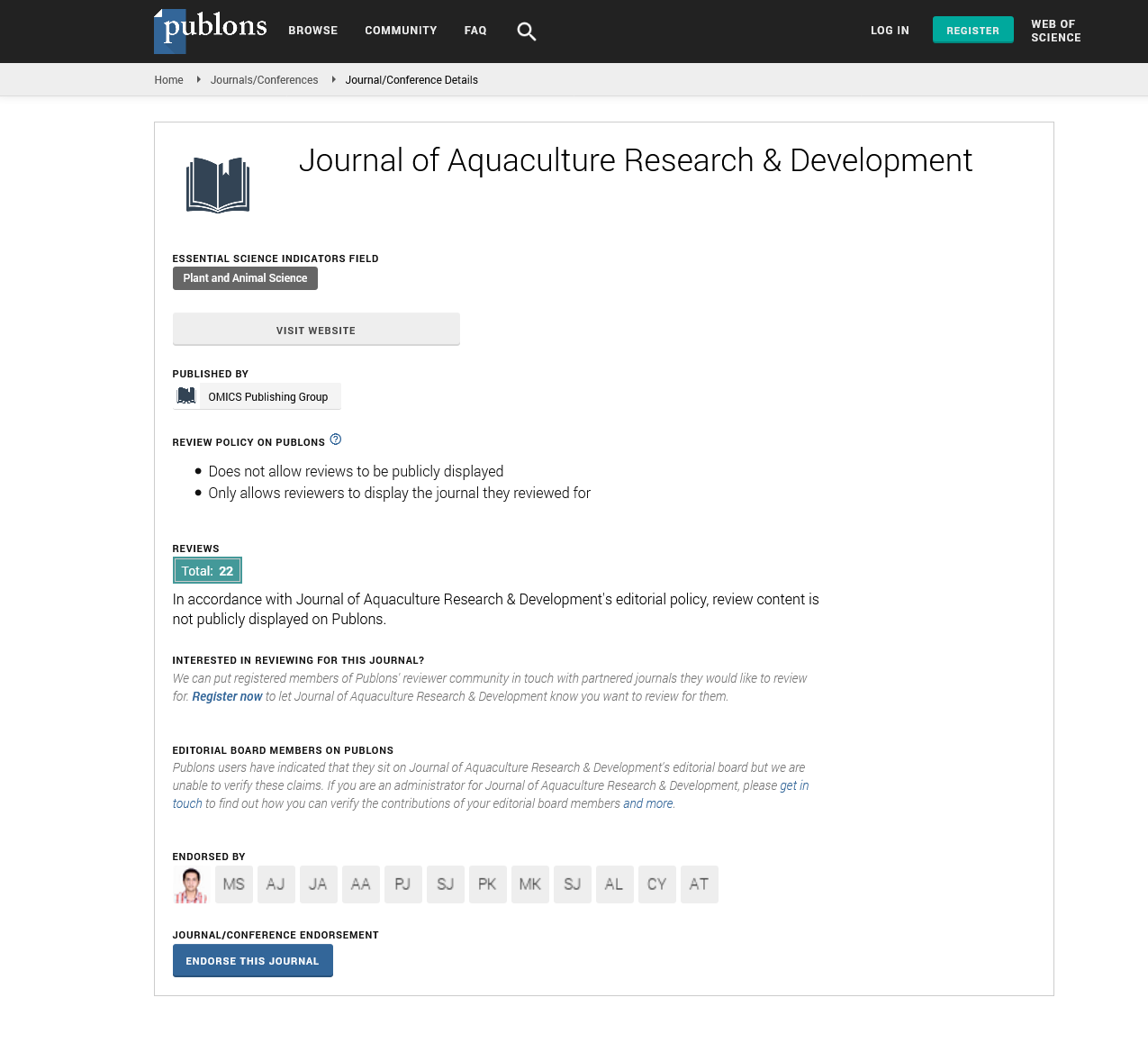Indexed In
- Online Access to Research in the Environment (OARE)
- Open J Gate
- Genamics JournalSeek
- JournalTOCs
- Scimago
- Ulrich's Periodicals Directory
- Access to Global Online Research in Agriculture (AGORA)
- Electronic Journals Library
- Centre for Agriculture and Biosciences International (CABI)
- RefSeek
- Directory of Research Journal Indexing (DRJI)
- Hamdard University
- EBSCO A-Z
- OCLC- WorldCat
- Scholarsteer
- SWB online catalog
- Virtual Library of Biology (vifabio)
- Publons
- MIAR
- University Grants Commission
- Euro Pub
- Google Scholar
Useful Links
Share This Page
Journal Flyer

Open Access Journals
- Agri and Aquaculture
- Biochemistry
- Bioinformatics & Systems Biology
- Business & Management
- Chemistry
- Clinical Sciences
- Engineering
- Food & Nutrition
- General Science
- Genetics & Molecular Biology
- Immunology & Microbiology
- Medical Sciences
- Neuroscience & Psychology
- Nursing & Health Care
- Pharmaceutical Sciences
Opinion - (2025) Volume 16, Issue 3
Skin and Wound Health in Bass Reflect Environmental Microbial Conditions
Robin Cooper*Received: 25-Feb-2025, Manuscript No. JARD-25-29135; Editor assigned: 27-Feb-2025, Pre QC No. JARD-25-29135 (PQ); Reviewed: 13-Mar-2025, QC No. JARD-25-29135; Revised: 20-Mar-2025, Manuscript No. JARD-25-29135 (R); Published: 27-Mar-2025, DOI: 10.35248/2155-9546.25.16.973
Description
Fish in intensive aquaculture systems often experience stress and physical damage, leading to skin or fin injuries that may become sites for secondary infection. Largemouth bass (Micropterus salmoides), a widely farmed species, is no exception. In these systems, pond water microbiota play a significant role in determining either beneficial or harmful outcomes following injury. This article examines how pond water microbial communities influence skin colonization, wound microbiota composition and healing outcomes in largemouth bass, with insights into potential applications for disease management.
Skin and wound microenvironment in fish
The integument acts as both physical barrier and immune organ. Its associated microbiota contribute to pathogen defense, nutrient processing and immune stimulation. Upon injury, damaged skin exposes underlying tissues to opportunistic microbes both from the animal itself and the surrounding water. These wounds attract bacteria that may either assist healing by outcompeting pathogens or delay repair through producing toxins or forming biofilms. As microbes in aquaculture ponds vary by water source, temperature, nutrient load and management practices, they shape the array of organisms likely to colonize open wounds.
Pond water microbial communities
Pond water microbiota are typically composed of bacteria (Proteobacteria, Bacteroidetes and Actinobacteria), microalgae, fungi and protozoa. Their composition evolves based on pond age, feeding strategies, organic waste inputs and temperature.
A richer aquatic microbiome may enhance skin colonizer diversity, potentially crowding out pathogens. However, high nutrient loads or waste accumulation can elevate opportunistic pathogens such as Aeromonas, Vibrio, or Flavobacterium, which may colonize wounds.
Pond water influence on wound colonization
Distinct patterns emerged among ponds:
Pond A wounds initially colonized by skin commensals, followed by diverse assemblies dominated by Pseudomonas, Chitinophaga and sediment-derived taxa.
By day 14, microbial diversity was high and by day 28 wounds were covered with regenerated epithelium, showing minimal inflammation.
Pond B wounds had increased early abundance of Flavobacterium and coliforms, with slower microbial succession. Healing stalled and combined histology showed persistent inflammation and slower wound contraction.
Pond C wounds quickly became dominated by Aeromonas and Vibrio, with mixed biofilm formation. These wounds showed substantial necrosis, delayed closure and bacterial invasion of dermal layers.
Microbial diversity and healing outcomes
Higher microbial diversity correlated with faster, cleaner healing. Ponds with even, low-nutrient microbiota allowed wounds to host diverse, balanced assemblages that enabled regeneration. In contrast, infections arose in ponds with dominant opportunistic pathogens, leading to slower healing.
Heatmaps and alpha-diversity metrics from sequencing confirmed that microbial community resilience was a key predictor of wound outcome. Beta-diversity analyses showed replicable patterns across individuals in each pond.
Pond management strategies
Given pond water’s strong influence on wound healing, several actions may improve health outcomes:
Selective fingerling transfer: Match juvenile fish with water sources containing resilient microbiota derived from similar production cycles.
Bioaugmentation: Introduce beneficial bacterial strains (e.g., Pseudomonas fluorescens, Sphingomonads) to shift pond microbial communities.
Waste control and water exchange: Reduce nutrient buildup to prevent pathogen dominance.
Monitoring tools: Deploy rapid microbial profiling or flow cytometry for pathogen warnings.
Vaccination and probiotics: Combine topical or feed-based immune stimulants with environmental microbiota for synergistic benefits.
Wound healing in largemouth bass is strongly influenced by pond water microbiota. Ponds with diverse, balanced communities led to faster, less infected healing due to early colonization and immune modulation. By contrast, ponds dominated by opportunists produced pathogenesis and healing delays.
These findings highlight that aquaculture environments are critical determinants of fish wound outcomes. Integrating microbiota engineering, biosecurity and immune science into pond practices can lead to healthier stocks and reduced antibiotic reliance.
Citation: Cooper R (2025). Skin and Wound Health in Bass Reflect Environmental Microbial Conditions. J Aquac Res Dev. 16:973.
Copyright: © 2025 Cooper R. This is an open-access article distributed under the terms of the Creative Commons Attribution License, which permits unrestricted use, distribution, and reproduction in any medium, provided the original author and source are credited.

